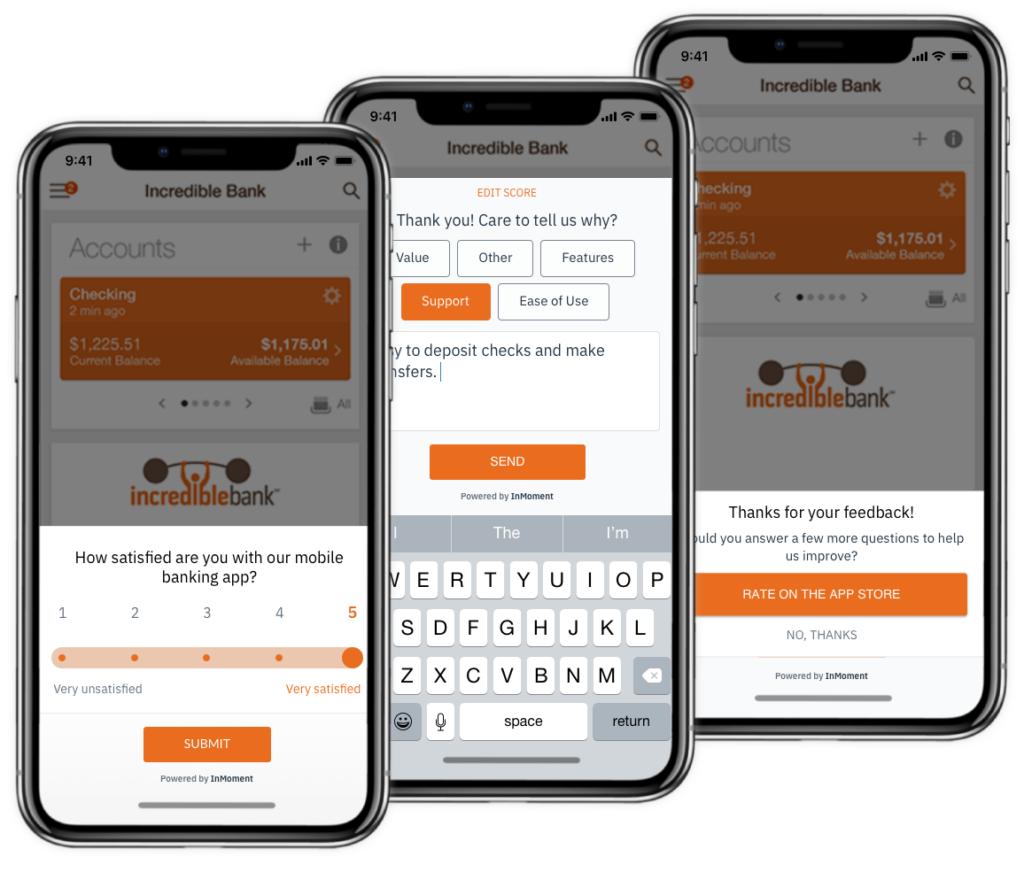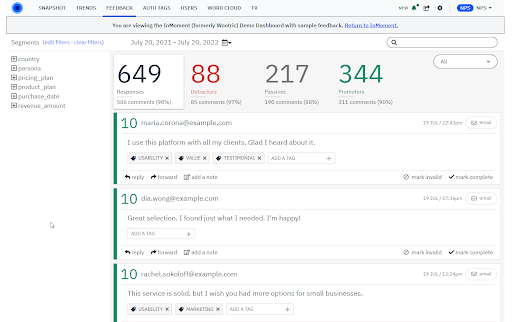How & Why You Should Customize the NPS Follow-up Question
There are a lot of ways to learn about your customers. You can pick up the phone, send out a survey, invite them to a customer event, or use a well-known method to learn more about who they are.
Net Promoter Score (NPS) is a simple and highly effective way to determine the happiness of your customers. This one rating — how likely are you to recommend <company> — gives you valuable business insights from the need to fix specific issues quickly, to long-term trends. But what about the NPS follow-up question?
That’s where the more actionable insight comes from, because the customer is able to explain the “why” behind their rating with an open-text answer that gives you the good, bad, and the ugly of their experience.
By customizing your NPS follow-up question, you’re better able to gain the insight you need to improve your customer experience (CX) and increase Customer Lifetime Value (CLV). We have four simple ways you can approach creating the optimal follow-up question for your specific needs.

Why Customize the NPS Follow-Up Question?
The follow-up question is open-ended, which makes the feedback very valuable. Customizing the question offers three key benefits:
- Better engagement. The right question can increase the percentage of respondents.
- Brand experience. Use your brand voice to state the question in a way your customers have come to expect.
- More targeted feedback. Beyond a simple “Why?”, the right question can elicit the information that’s most useful to you and your company.
NPS Follow-up Question Strategies
Where to start? Take a look at these four approaches to creating your follow-up question. Start with one, test, and make your next move based on your results.
Strategy #1: Use the Standard Question
There’s nothing wrong with using a standard NPS feedback question. Simply put, it’s the standard question because it works. It’s also the quickest to implement and a good choice when you’re starting out with NPS.

Strategy #2: Customize the Question Based on Score
Take an advanced approach and segment your follow-up question based on the responder’s rating. The NPS rating breaks down the respondents into three categories:
- Promoters. Rating 9 or 10. Loyal customers who are a great source of referrals.
- Passives. Rating 7 or 8. Customers who are satisfied with the service but are susceptible to competitors.
- Detractors. Rating 0 – 6. Unhappy customers who can damage your brand.
Even a simple copy tweak like ‘Care to tell us why? Your feedback will help us to improve.’ will signal to Detractors or Passives that you are aware that they aren’t happy. Then close the feedback loop and follow up with your responders to let them know you not only heard them, but took actions to make their experience better in the future.
For Promoters, your question could convey your pleasure in serving them well with ‘We’re thrilled you feel that way. Care to tell us why?’ As a marketing follow up, you could invite them to share their remarks on social media.
Strategy #3: Insert Your Brand Voice
Ask a standard question, but use your brand’s unique voice and tone — super friendly, concise and business-like, or modern and fun — in your follow up question. This touch makes it clear your company has put thought into the survey and will thus pay attention to feedback, vs just using a generic question to check a customer response box in their business process.
For example, Zappos’ brand is fun, personal, and friendly. The company has used the following follow-up question:
Overall, would you describe the service you received from (insert name of customer loyalty rep) as good, bad or fantastic? What exactly stood out as being good or bad about this service?
You can ask the same short question with a variety of tones just by changing the copy:
- What is the most important reason for your score?
- Just curious! Why’d you score us that way?
- Why did you give that score?
- Please explain why you gave us this score.
- Please provide your reasoning for this rating.
If you’re segmenting, consider adding a short intro that acknowledges a poor or good score.
- Our apologies for not meeting your needs. Care to tell us why?
- Awesome, thank you! Would you tell us why you feel that way?
Strategy #4: Deviate From the Standard “Why”
Depending on what you want to know, you might test a different question than “why?” Some examples:
- What can we do to improve your experience?
- How would you describe what we do to a friend?
- How can we improve?
- Can you share any specific feedback about ___?
- What is one thing we could do differently to make you happier?
Check Your Response Rates
An important part of any strategy is how you’ll determine if it’s working. That’s where data comes in. The good news is that the NPS rating is quantitative. When you’re optimizing your open-ended follow up question, keep an eye on the response rate. How is your customized follow-up question affecting the percentage of respondents who also leave comments?

These aren’t just stand alone strategies. Play with the copy, try segmentation, and craft a brand-forward follow-up question.
NPS is a simple one-rating and one-question survey that packs a huge punch for your CX program. Done well, NPS responses will have impact throughout your company.
Whatever question you choose to use, be sure you’re employing sentiment and text analysis to quickly and accurately pull actionable insights from each response. Then share that information across your company so the feedback can address current needs and also drive customer-focused strategic planning.
Let us know how it goes! But, if you’re looking to learn more about NPS best practices, check out this quick article, “NPS: Using It Correctly,” that tells you everything you need to know.
Start measuring Net Promoter Score for free with Pearl-Plaza


